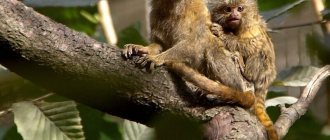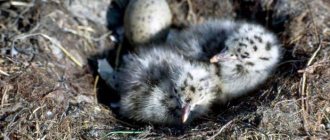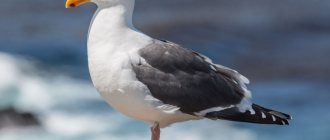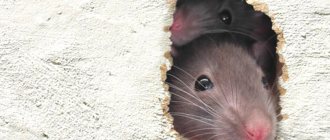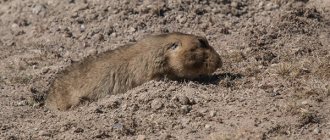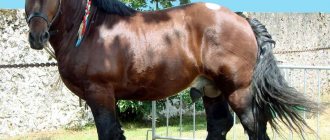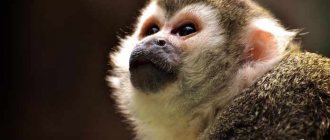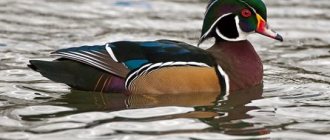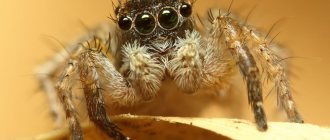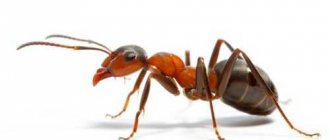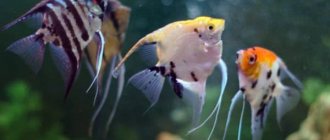Bay horses are the most common. Animals with a uniform brown color or with darkened areas are widely found. It is less common to see a bay horse with lightened areas. Individuals of the bay color have been known since ancient times. The beauty and strength of animals is mentioned in many folk works. In addition, bay horses are considered hardy and fast, which was necessary in the distant past. Even now, most often animals of this particular color become absolute champions in horse racing and racing.
Among the Slavic people, the bay color has long been characterized by burning and fumes, which in Latin sounds like “nidor”. The mane and tail of the animals seem to be touched by fire. In villages, such horses were often affectionately called Gnedko and their obedience, stamina and efficiency were worshiped. It is not for nothing that the Arab nationality has the following judgment: you should not buy a red horse; It is allowed to sell a black horse, take care of a white one, and ride a bay horse.
The main hereditary factor in horses is color. The individual characteristics of a horse, color, eye color, character depend only on the color and there is no disagreement in the characteristics of the animal. Over time, due to some differences between individuals, the concept of “colors” was introduced - different colors of bay. Such an introduction became necessary because in ancient times, there were four main colors, which were used to determine the distinctive features and characteristics of horses:
- Bay.
- Voronaya.
- Redhead.
- Gray.
Due to the combination of such suits, others appeared over time. Now experts count at least 14 main suits, and if you take into account their shades, the number will reach 30.
Description
The peculiarity of a horse of any shade of red color is the uniform coloring of the mane, tail, legs, and body. The main difference from the bay is the color of the legs, which have black legs.
- The mane or tail is much darker than the body. Or - much lighter. At the same time, there are no black and white hairs in the coat and guard hairs (forming the tail or mane). They're red.
- There are a huge number of shades of this color in nature: from very light to dark chocolate.
- It is believed that dark ones are hardier than light ones. The latter are distinguished by agility.
- Character does not depend on color and is determined by breed and nervous system.
- The skin is gray, of different shades. Rare, especially valuable animals are born with pink skin.
- The eyes are predominantly brown: from amber to dark, almost black. Although occasionally there are blue or green ones. Such eyes are associated with the presence of white markings. They are also characteristic of horses with pink skin.
The color can be light, dark, red and actually red:
- Redheads are varied: from delicate apricot to deep chestnut.
- Red ones are heavily diluted with the corresponding color.
- Dark shades are characteristic of brown suits: dark and light. Color ranges from light brown to burnt coffee or dark chocolate. There are no red shades.
- Light ones - dun, solovaya and isabella.
Bulanaya has a golden sandy coat color and very dark coloring of the guard hair and legs up to the carpal joints. There are dark, light, golden, silver-brown and dapple-brown. With a corresponding variety of shades: from milk and rich yellow to reddish.
Nightingale is very similar to dun milk. The difference is the color of the protective hair – it is light. Isabella is genetically close to the nightingale and dun. Has a creamy coat against pink skin combined with blue eyes;
- Wild: savrasaya, mousey, kauraya. They often have a dark stripe along the spine and dark stripes along the body (on the body and legs).
- Savras are distinguished by faded shades of red. The belly is light, and the legs and protective hair are dark, almost black.
- Mouse animals (light, dark, fly) have an ashen and brown body (various light or dark tones). Mane, belt, tail, legs - black or gray.
- Muhorta have tan markings on the groins, around the eyes, around the joints, on the rump and around the mouth.
- Browns have a reddish coloration and brown guard hairs.
- The gamefish are characterized by very light, ash-colored protective hair with a red or brown body color;
- Roans have uneven coloring: the head and legs have the color of any of the listed colors, and the color of the body is greatly diluted by white hair.
Photo gallery
Owners of bay color are widespread in different countries of the world, and the variety of shades is so great that such animals can be the ancestors of all existing breeds. Moreover, now there is no true bay color, but only combined variations.
The story goes that the original horse had a light brown body, as well as completely black hooves and tail. You can get acquainted with the external features of modern animals using a detailed photo gallery.
Genetics
The prevalence of this color is associated with one feature: the red color gene is present in all breeds.
It is the result of a complex process of chromogen oxidation. More precisely, its first stage, which produces red or brown pigment grains. Only then do the subordinate (epistatic) black and bay cows sequentially form. In the offspring of blacks and bays, depending on the combination of genes, you can get red ones. At the same time, the gray color gene is dominant in relation to all of the above. Its formation does not obey the epistatic series.
Inheritance of suit is determined by alleles of the Extension . Allele E (pigment eumelanin) encodes inheritance for the crow, allele e (pigment pheomelanin) for the red one. Two red horses will only produce red offspring. Two blacks or bays can have a chestnut foal. If one of the parents is red, and the other is black or bay, then the color of the foal depends on the genotype of the second parent: it can be red, black, or bay.
In addition to the type of pigment, the color depends on its distribution along the length and on the structure of the hair. Shades are determined by the participation of the corresponding lightening genes or darkening genes. The champagne gene turns wool into real gold, and the participation of the pearl gene can only be compared to the color of an apricot.
The cream gene (the so-called Cremello) marked the beginning of the Isabella suit. Flaxen - participates in game, and Dun - in brown. Genes that determine color are often linked to others that are expressed in appearance or affect the health and conformation of animals. For example, the protective hair of dappled horses is not voluminous.
Over the course of life, color may change. Stress, changes in living conditions, diet, and basic tanning will turn a horse from a red horse into a bay or even a black one, according to primary documentation. Sometimes these changes are irreversible.
Care and maintenance
Bay horses, like others, should be kept in clean and dry stables, free from drafts and dampness. The latter can provoke serious fungal diseases that are difficult to treat.
Daily hygiene procedures are a prerequisite for good horse health. Every day the animal needs to be brushed, wiped, and its hooves inspected for cracks. The horse must regularly receive physical exercise; if it is constantly in the stall, it will simply wither away. Clean water should always be available to the horse. Horses are famous water drinkers; they can drink up to 10 liters per 100 kg of weight per day, and up to 30 liters at a time.
Photo of red color
Horse breeding
In the second year of their life, horses reach sexual maturity. During the mating season, also called “hunting,” mares ready for mating allow stallions to approach and, after fertilization, bear the fetus for 11 months.
Twins in horses are a rare occurrence; as a rule, the female gives birth to one foal, which at first is unsteady on its feet, but quickly grows stronger and after a few hours is already running quickly. It feeds on milk for 5-7 months, after which it switches to independent feeding.
Horse breeders and farmers use artificial insemination, which significantly saves time on the selection and compatibility of horse pairs.
Breeds
Red horses can be found in almost all breeds. But there are breeds where they have the most, if not all, of them. They are the calling card of Budennovskaya and Donskaya. At the same time, representatives of Budennovskaya often have a golden hue. No wonder they are called “the gold of Russia.” In addition, there are many of them in the French horse and its paws.
The red-brown color is typical for heavy-duty vehicles. Both national (Russian, Soviet) and foreign (Suffolk, Breton). The Morgan breed is characterized by a dark brown shade. Rare, close to black color, caused by darkening of genes.
The playful dress is typical of Belgian oligarchs and heavy trucks. Chubaraya - for the Appaloosa, Knabstrupper and Frederiksberg breeds.
The Americans developed a special breed of Isabella color - a cream color, although this color is found in the Akhal-Teke breed, palomino horses, Kinsky horses and other breeds that are characterized by night and dark colors.
Fairy tales endow horses with all possible magical properties. History is unthinkable without them: nomads, knights, great conquerors of the past shared their successes with them. A strong, large and strong animal was both a means of transportation and the main culture of the land for their peaceful, sedentary contemporaries.
Paying homage to the archaic function of long-distance travel, horsepower measures the output of new vehicles.
They were trusted with fairy tale heroes and epic heroes. And to give them their due, the Bible promises to meet a rider on a red horse at the end of time.
Bay horses in art
Horses are extremely intelligent and noble animals. They feel and understand people very well. They have character. A horse will never hurt a child. Accidents happen if you approach them incorrectly. They can't see what's going on behind the rump, so they might kick. For this reason, everyone who finds themselves near a horse for the first time is warned that they should go around it in front. You can even right under the neck - she won’t do anything bad. Noble animals have long inspired talented artists.
In the seventies of the nineteenth century, the romance by Sergei Donaurov based on the poems of Alexei Apukhtin “A Pair of Bays” was very popular. This is a sad story about the fate of an actress who once shone in the world, but in her old age found herself forgotten by everyone and abandoned to a lonely existence. Only a couple of old bay horses remained her faithful companions.
On one of the squares of Kursk there is a bronze sculpture representing a pair of bay horses harnessed to an elegant carriage with a folded top. Kursk residents and city guests love to take pictures against their background.
In 2009, Sergei Krutinin’s feature film “A Pair of Bays” was released. This is a touching melodrama. Starring: Irina Kupchenko and Mikhail Zhegalov. Her granddaughter comes to see Lydia Petrovna, Kupchenko’s heroine. She is played by Agniya Kuznetsova. The daring and self-confident Muscovite slightly despises the lifestyle of the coastal province. The grandmother’s solitary life and her calm romance with Arkady Pavlovich, who lives next door, seem boring and stupid to her. Gradually, she begins to understand that the delicate attention that old people show towards each other is true love. In general, the old age of a person and the old age of a horse are often compared.
One of the main character traits of horses is herding. What does this mean? This is a complex structure common to a group of horses. In a team of horses there is always a hierarchy based on age and strength. Horses always protect and support their own, that is, those they like. This is clearly visible in the herd when several new horses appear there. They, even if there are only two or three of them, once in a large herd, always stay close to each other and vigilantly ensure that other horses do not offend the members of their small team.
